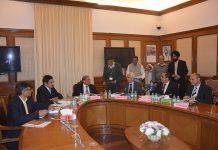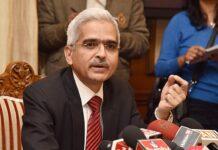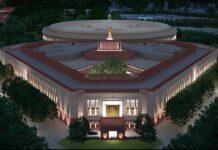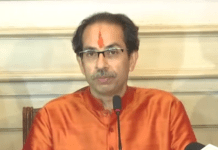From the pinnacle of glory as ‘Vihar’, known worldwide for wisdom, knowledge and imperial power in Maurya and Gupta times of ancient India, to ‘Bihar’ of post-independence democratic India of modern times known, again worldwide for economic backwardness, caste based politics and ‘bad blood’ between social groups; the story of ‘Bihar’ from ‘Vihar’ may actually be story of how the sense of identity and healthy nationalistic pride, one of the key drivers in the unconscious ’minds’ of a population influence and determine the characters of a society and how any genuine effort for improvement and development must aim to ‘re-engineer’ minds.
‘’Our sense of identity’ is at the core of everything we do and everything we are. A healthy mind needs to be clear and convinced of ‘who we are’. A healthy ‘pride’ in our achievements and successes as society goes a long way in shaping our personality as a strong, confident person who is comfortable in his or her immediate surrounding. These personality attributes are common among forward looking successful persons. The idea of ‘identity’ draws heavily from shared history, culture and civilisation’’ (The India Review, 2020).
Significant records about the region known as Bihar today probably starts with Buddha’s life course events in places like Champaran, Vaishali and Bodh Gaya. The great Imperial power centre of Pataliputra and the seat of learning of Nalanda were the highest points in the story of civilisation of Bihar for the prosperity and well-being of people. Democracy had already taken roots in Vaishali then. Life of Buddha and his teachings inculcated the values of social equality, liberty and freedom, respect for diversity and tolerance among the masses; the kings and emperors of Pataliputra particularly Ashoka the Great, were instrumental in inculcating these values among the masses. Trade and commerce had flourished, people were wealthy and prosperous. Buddha’s redefining Karma from ritual action to good moral intent behind the action was the watershed that ultimately made huge impact on trade and commerce and economic and mental well-being of the people who in turn supported Buddhist monks with food and basic life necessities. As a result, large number of monasteries or Viharas flourished in the region. ‘Vihar’ or monastery ultimately gave the name Vihar to this region, which in modern days is known as Bihar.
By eighth century, Buddhism declined; the current Bihar started taking birth and ‘Vihar’ finally got replaced by ‘Bihar’. The professional and occupational groups in the society became endogamous birth-based castes, a stagnant system of social stratification that hardly allowed any social mobility to accommodate aspirations to rise and excel. The communities got hierarchically arranged and stratified in terms of ritual pollution. The people were either superior or inferior, only those in the same castes were equals and good enough to socialise and marry. Some people had power over the rest. The social order based on the democratic values of equality and liberty had got replaced in due course by feudal social order. The society thus got segregated into birth-based, closed, endogenous castes with the so-called higher castes controlling and determining lives of the lower castes. The caste system did offer guaranteed livelihood for a long time but it came at a very heavy price of institutionalised inequality in social and economic relations, something highly dehumanising for large number of people and detrimental to democratic values and basic human rights. Possibly, this explains why a large chunk of low caste population converted to Islam in pursuit of ‘social equality’ during medieval times which eventually led to partition of India on religious lines and why we still hear the echo of that in electoral politics of modern era in the form of Jai Bhim Jai Meem slogan. The education has hardly made any impact, and that can be seen from the matrimonial advertisements in national dallies placed by educated elites of the society to understand how minds operate vis-a vis caste. The national and freedom movement against British rule masked the resentments among the lower castes for a while so did the massive industrialisation and development efforts in post-independence Bihar under five-year plans to an extent but unlike in rest of India, the planned development and industrialisation could not sustainably contribute in taking Bihar forward towards prosperity.
The rising aspirations of lower castes got their greatest benefactor and ally in democratic modern India in the form of power to vote, the universal franchise to cast ballots. The eighties saw the rise of lower caste leaders and the social transition began that changed the power relationship between the castes in Bihar. Now, caste-nationalism and caste-based politics was at the forefront of everything and political power moved out of hands of upper caste groups. This transition, which is still ongoing has come at a heavy cost of varying degree of conflicts and emotional disconnect among the caste groups.
As a result, Bihari identity or Bihari sub-nationalism could not really evolve nor could right kind of values to support ethos of entrepreneurship and wealth creation through business and industry. The super segmented society of Bihar unfortunately could not have had a suitable social climate for growth of businesses and industries – caste nationalism placed social groups against each other for power, prestige and superiority over and against others. The relentless pursuit of power by the so-called upper castes over the so-called lowers and the concerted efforts by the so-called lower castes to bridge the power differentials led to conflicts consequently rule of law, the sine qua non for stable prosperous society was obviously the victim. This could be the reason why Nehru’s industrialisation of Bihar and development agenda of Shri Krishna Sinha failed to do any good to Bihar the in long run. So has modern day politicians so far. Nor any future government is likely to make Bihar prosperous again despite ‘development’ being on agenda of all political parties because conducive social environment is simply not there nor likely to be there any sooner. Caste based social and economic fabric was/is the most unfortunate thing that ever happened to Bihar because among other things, this hindered growth of healthy Bihari sub-nationalism among people of Bihar, something that could bind them emotionally cutting across primordial caste loyalty.
Ironically, impetus to growth of Bihari identity came from unexpected quarters in rather unpleasant ways based on shared negative experiences, something like ‘ridiculed and discriminated’ people coming together for negative reasons. Eighties had seen beginning of large number of students of well to do families from Bihar migrating to Delhi to study in universities and to prepare for UPSC examinations. Majority of them settled in Delhi and other parts of India to pursue their career in civil services and other white-collar jobs after completing their studies. One of the key shared experiences of these Biharis are the negative attitudes and stereotype, a kind of ill feelings of non-Biharis towards Biharis. Pushpam Priya Choudhary, president of Plurals Party expresses this in the following way, ’If you are from Bihar, you have to face lot of stereotypes when outside Bihar…. due to … the way you speak, your accent, the distinctive way of pronouncing associated with Bihar, ……, people make opinions about us based on our representatives…. ‘’ (The Lallantop, 2020). Perhaps, by ‘representative’ she meant elected politicians of Bihar. The experiences of migrant labourers and workers were/are far worse. The famous leaders of Maharashtra had once commented to suggest that Biharis bring diseases, violence, job insecurity, and domination, wherever they go. These prejudices have effectively made the word ‘Bihari’ an abuse or denigrative word almost across the country.
This meant that Biharis had an additional burden of overcoming prejudices and proving their worthiness. Many felt insecure, the educated ones with less or no accent attempted to conceal the fact that they were from Bihar; some developed inferiority complexes, many felt ashamed. Only few could overcome the feeling of shame. The guilt, shame and fear could not be conducive to emergence of healthy successful personality who is clear and confident of primary identity and comfortable in his/her surrounding especially in absence of pan-Bihar strong sub-nationalistic culture to be proud of and to draw inspiration from.
However, one of effect (on Biharis) of the prejudice against Biharis in other parts of India was the emergence of “Bihari identity’’ in the minds of expat Biharis of all castes, courtesy absence of any pan-Indian caste identity meaning Biharis of all castes faced same prejudice irrespective of their caste status in their native place. This was the first time that all Biharis had become aware of their common identity cutting across caste lines albeit through their shared experience of prejudice and shame.
What is needed is to have the shared history and culture as basis of common identity? This sense of regional identity should have emerged on the basis of positive attributes that makes one proud and confident. There was/is a definite need for healthy growth of sub-nationalism i.e., ‘Bihar-ism’ or ‘Bihari pride’, a strong, distinct Bihari cultural ‘identity’ that could overcome caste nationalism and weave Biharis together which unfortunately unlike in other states has not happened to Bihar so far. Therefore, what Bihar needs is forging ‘Bihari Identity’ on positive notes of shared history, culture and civilisation; and inventing and discovering ‘Bihari Pride’ stories. The emotion of being Bihari must become strong enough to subsume caste nationalism among Biharis. Reconstructing its history and instil Bihari pride among children would go a long way in serving needs of Bihar. Linguistic component plays an important role in the shared history and culture that a region can be proud of being their own.
There are at least three important languages, Bhojpuri, Maithili and Magadhi but identity of Bihar seems to be more closely linked to Bhojpuri. Hindi is usually spoken by the educated elites, those who have come up in life while the above three languages are usually spoken by the rural folks and people of lower classes. Usually, there is bit of ‘shame’ associated with usage of Bihari languages. Perhaps Lalu Yadav is the only public figure who spoke Bhojpuri in public forum that gave him the image of uneducated person. He carries his poor social background on his sleeves. He is a politician with a very strong connect with the underprivileged people many of whom consider him as messiah who gave them voice and place in the society. Sivanand Tiwari recollects, ‘’…., once I had been to a meeting along with Lalu, unlike typical of politicians we had reached little early. The ordinary people belonging to Mushar community (a Dalit caste) lived close by. When they learnt of Lalu’s presence, children, women, men, all thronged to the meeting venue. Among them was a young woman with a baby in her arm, trying to catch attention of Lalu Yadav when he noticed and upon recognising her asked, Sukhmania, are you married here in this village?……. ‘’ (BBC News Hindi, 2019). Perhaps Narendra Modi is the only other politician of national stature who spoke in Bhojpuri in recently concluded election rallies in Bihar to establish a connect with the masses. Language is thus an important dimension of one’s cultural identity, something to own and to be proud of always. There is just no case for any sense of inferiority about the language.
The highest points in the history and civilisation of Bihar are Buddha’s novel educational and philosophical system of empowering individuals based on scientific spirit of ‘enquiry and reasoning’ and causal analysis of realities around to identify path for wellbeing. His emphasis on compassion and social equality and redefining Karma in terms of ‘moral intent’ behind action had made huge contribution is prosperity of the people. Similarly, values of Jainism enunciated by Mahavir in Bihar have contributed to economic and business success of Jains across India who are among the richest and most prosperous (Shah Atul K. 2007). Principles of governance enunciated and practiced by Emperor Ashoka of Pataliputra as evidenced in his rock edicts and pillars across the subcontinent are still so progressive and modern in outlook to be the fountainhead of India State. These need to be re-adopted as life values to live by and the associated sites to be developed to cherish and be proud of than merely places of tourist attraction.
Perhaps an iconic leadership will help!
What Bihar needs is to educate its children to meet challenges of economic success and prosperity. Servants or job holders do not drive economy. Poverty and economic backwardness are no virtue, not something to be proud or ashamed of nor something to be brushed under the carpet. We need to educate the people to become entrepreneurs and innovators, not to become servants or job seekers. If and when this happens, that would be the turning point.
***
“What Bihar Needs” Series Articles
I. What Bihar Needs is a Massive Revamp in its Value System
II. What Bihar Needs is a ‘Robust’ System to Support Young Entrepreneurs
III. What Bihar Needs is the Renaissance of ‘Vihari Identity’
IV. Bihar the land of Buddhist World (the web-book on renaissance of ‘Vihari Identity’ | www.Bihar.world )
***
Author: Umesh Prasad
The author is an alumnus of the London School of Economics and a UK based former academic.
The views and opinions expressed on this website are solely those of the author(s) and other contributor(s), if any.






















